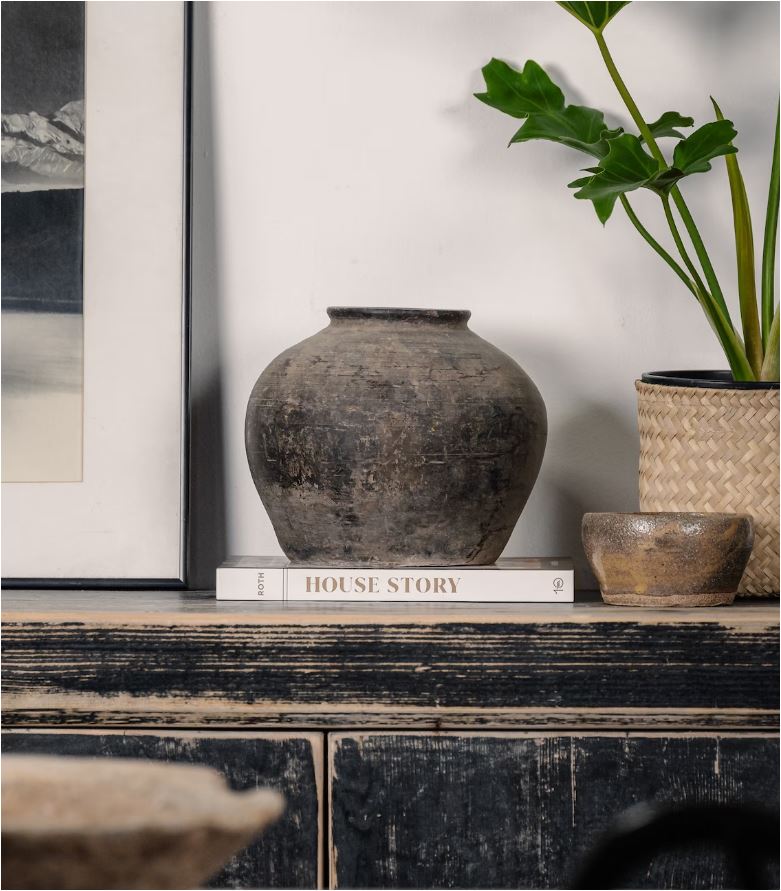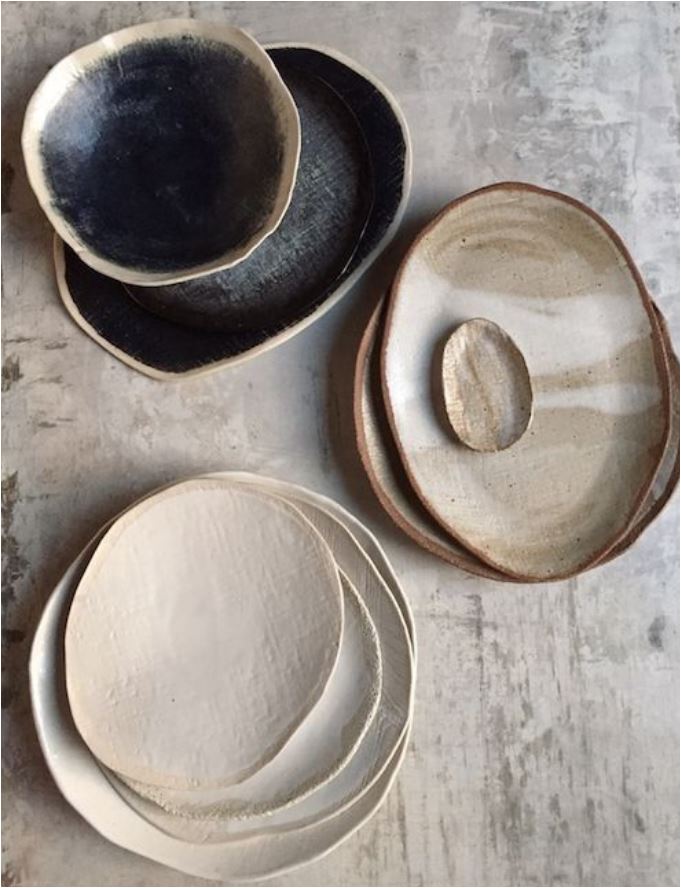The term ‘wabi sabi’ has no direct English translation, rather it’s a Japanese aesthetic rooted in tradition. The word ‘wabi’ refers to harmony and tranquility while ‘sabi’ loosely translates to beauty achieved over time.
The design philosophy reflects nature’s colors and textures and honors the beauty of imperfection. Modesty, simplicity, and handmade are prioritized, whereas anything excessive, artificial, or saturated in hue is avoided.
Wabi sabi is aligned with sustainability in its principles to reuse, recycle, or repair instead of replace. The design style shares the comfort of hygge with the minimalism found in japandi design as well as the use of natural colors and textures in bohemian style.
How does one achieve the wabi sabi aesthetic? In these seven ways:
1. Simplicity
Conscious editing and removal of anything unnecessary creates a sense of calm that arises from an uncluttered space. Quality is valued over quantity.

laure joliet

via apartment therapy
2. Earth tones and muted colors
The wabi sabi palette is soft, warm, and harmonious with nature. Color is welcome if muted, think of olive or sage seen in landscapes, various browns tones found in wood, or the soft pinks of a sunrise.

via living

via apartment therapy design by miranda & co.
3. Organic Textures
Materials used throughout wabi sabi style interiors retain their organic roots, knots and grains appear in weathered wood surfaces, textured stone is visible on surfaces, and textiles are natural and woven such as jute and linen. Finishes that are raw, irregular, or matte are chosen instead of ones that are polished or glazed.

nainoa

via airbnb
4. Imperfection
Wabi sabi embraces objects or materials that are visually imperfect as part of the sensory experience.

zuu seramik

via strenghielm
5. Handcrafted
Mismatched and handmade tableware or textiles are sourced from individual craftsmen or businesses produced in small batches.

through the porthole

the prop dispensary
6. Repurposed
Wabi sabi celebrates the innate beauty found in objects that are old but still useful. Reclaimed or upcycled furniture or objects that have history are on display in a wabi sabi style space. Preowned or vintage furniture pieces are included as part of the aesthetic.

TOM interior design

via architonic
7. Asymmetry
Object placement, artwork, and visual arrangements create balance through the creative use of asymmetry.

cuxri art

source unknown
A wabi sabi philosophy also appreciates the innate beauty of imperfect animate and inanimate objects, from bonsai botanicals to broken pottery repaired in the kintsugi style. Opting in to wabi sabi philosophy recognizes that things become more beautiful with aging or fading, a sentiment that is such a lovely contrast against the celebration of flashy and new.
Are you a fan of this warm and time worn aesthetic?
centsationalstyle.com










